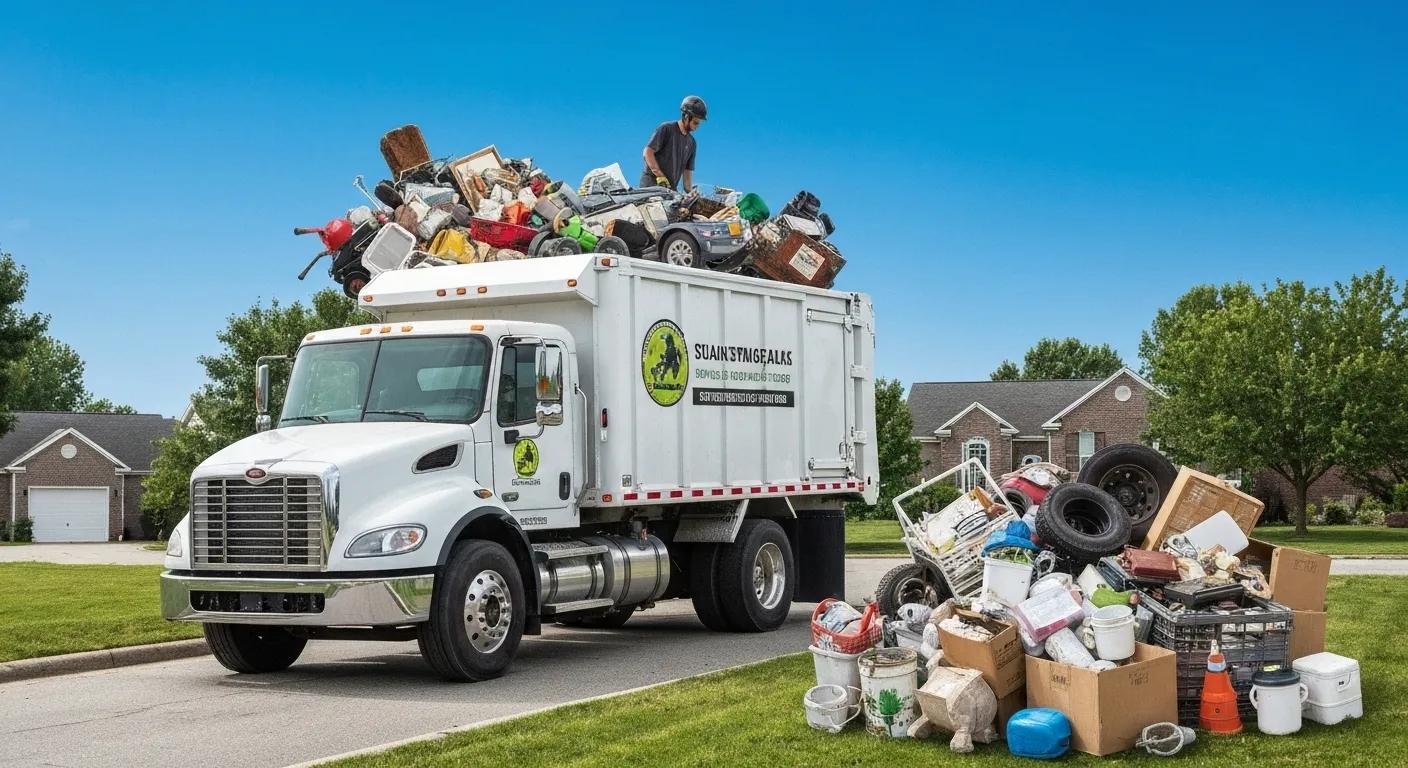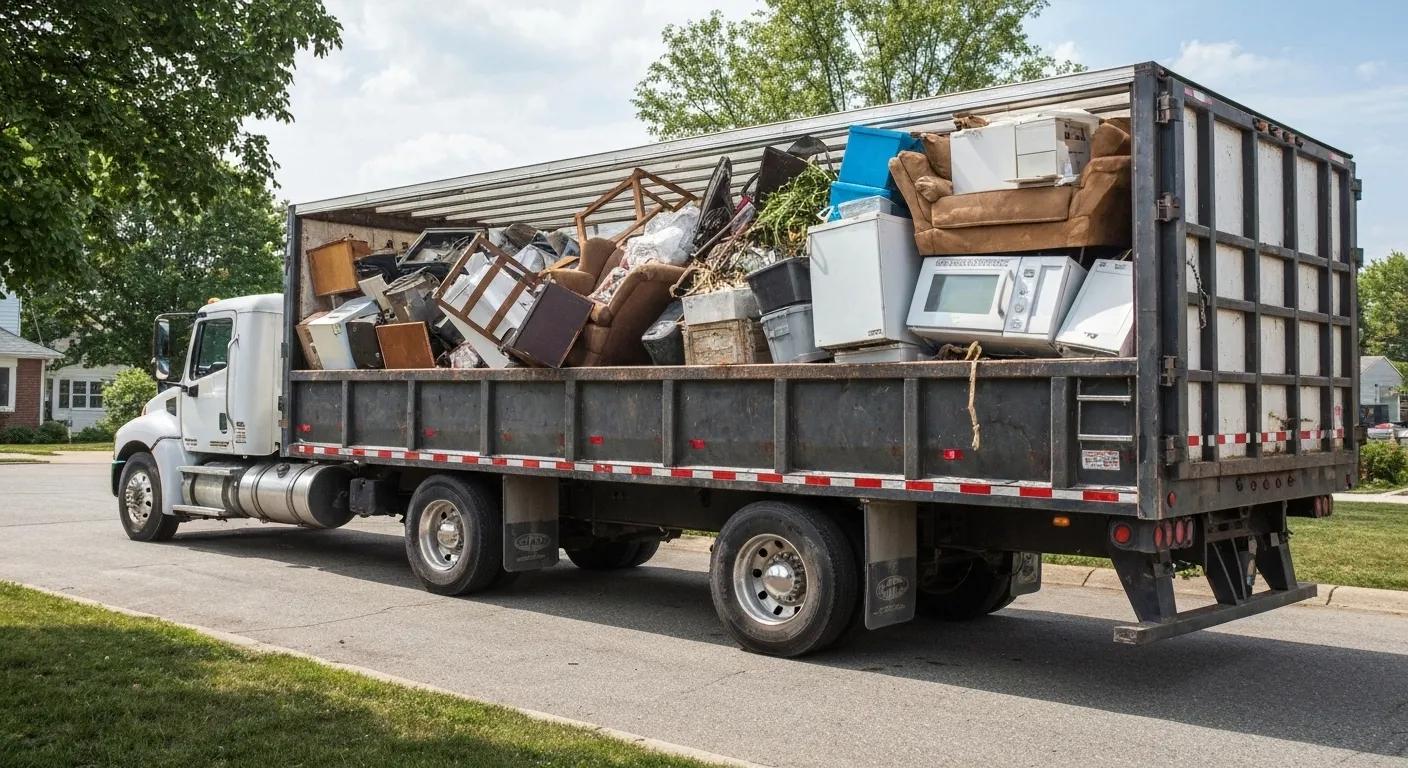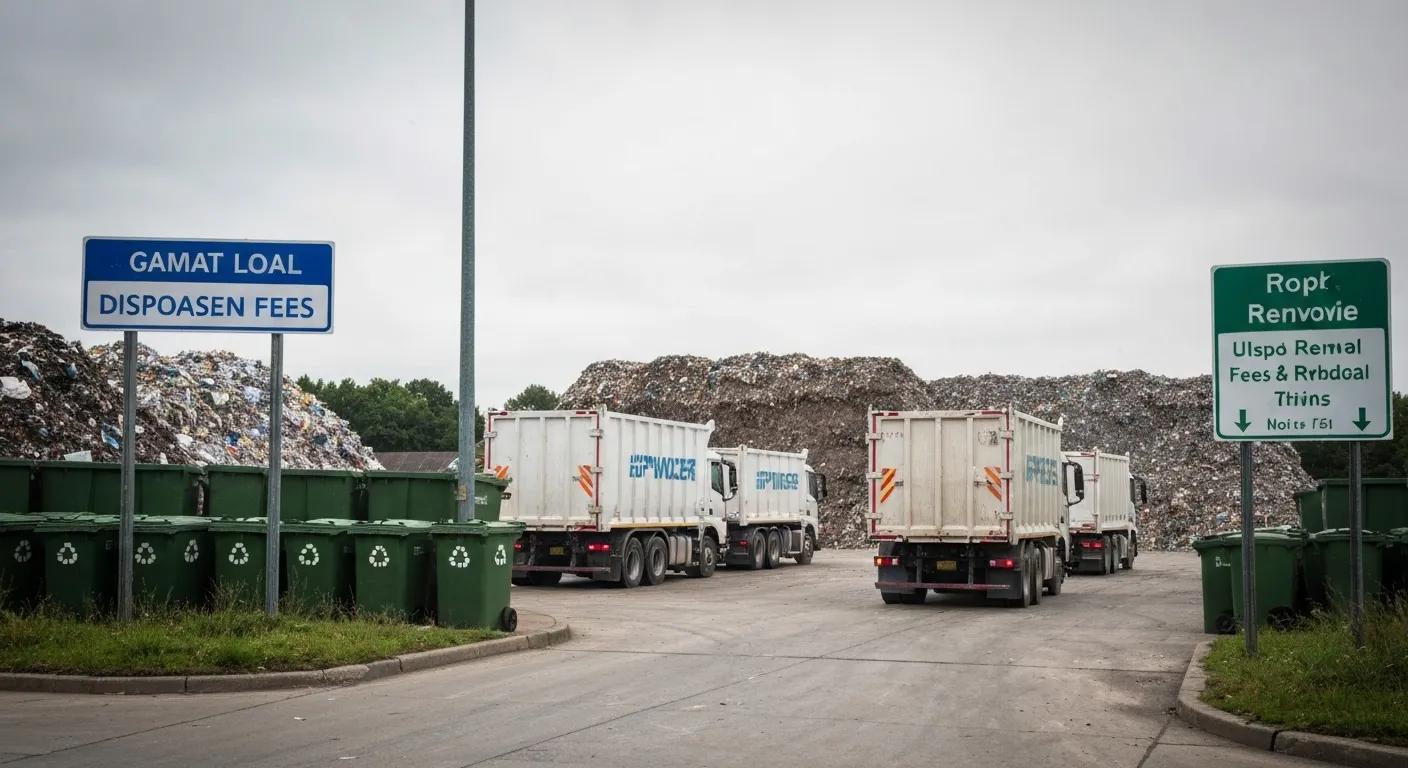How Location Impacts Junk Removal Costs
How Location Impacts Junk Removal Costs: Key Factors and Local Pricing Insights

Where you live can bump up your junk removal costs by as much as 30%, thanks to travel, disposal fees, labor rates, and local rules. Many homeowners find themselves puzzled by quotes, not knowing what really drives the costs. In this guide, we’ll break down the main cost factors—volume, material type, labor, and access—and dive into how distance to disposal sites, landfill fees, regional wages, permits, and fuel surcharges shape your final bill. You’ll also discover urban vs. rural and state-by-state benchmarks, see how CNC Junk Removal ensures clear local pricing, and get practical tips to secure an accurate location-based quote.
Impact of Location on Waste Management Costs
Geographical location plays a big role in waste management costs, with factors like distance to disposal sites, local fees, and labor rates being key players in determining the final price. These location-specific elements can cause significant cost differences across regions.
Environmental Protection Agency (EPA), Municipal Solid Waste Generation, Recycling, and Disposal in the United States: Facts and Figures (2021)
This research backs up our claims about how location-based factors affect junk removal costs.
What Are the Main Factors Affecting Junk Removal Costs?
The main drivers of junk removal pricing include the amount of waste, its composition, crew time, and site accessibility. Each factor combines to shape your total estimate.
How Does the Volume of Junk Influence Pricing?

More junk means bigger trucks or more trips, which directly ups hauling and disposal costs. A single cubic yard of general debris usually costs less per unit when consolidated, while partial loads might incur higher per-yard rates. By optimizing load planning, CNC Junk Removal maximizes truck space and cuts down the cost per cubic yard.
Why Does the Type of Junk Matter for Cost Estimates?
Different materials require unique disposal processes and fees:
Electronics and batteries need e-waste handling.
Construction debris might need recycling or transfer-station permits.
Organic waste often qualifies for composting, reducing landfill charges.
Understanding these classifications helps homeowners anticipate fees tied to material-specific protocols and environmental compliance.
How Do Labor and Time Affect Junk Removal Prices?
Labor costs depend on crew size, job complexity, and time on site. A two-person team clearing bulky furniture in 90 minutes will cost more in regional labor rates than a quick one-person pickup. Efficient scheduling and minimal on-site time reduce labor components in your estimate, which CNC Junk Removal achieves through trained teams and optimized route planning.
In What Ways Does Access and Location Difficulty Impact Costs?
Narrow driveways, multi-story staircases, or long removal distances demand extra manpower or specialized equipment, adding surcharges for complexity. Easy ground-level access bypasses extra effort, while tight spaces might need skip bins or extra trips. Factoring access early in the quote process avoids last-minute cost surprises.
Why Does Your Location Significantly Affect Junk Removal Pricing?
Your address dictates travel distance, local tipping fees, labor rates, permit requirements, and fuel surcharges—each a distinct cost component in your final quote.
How Does Distance to Disposal Facilities Influence Cost?
Greater mileage increases vehicle operational expenses and travel time. Fuel surcharges often start at 15 miles round-trip and rise per additional mile. Minimizing empty-haul distance lowers your overall rate, as CNC Junk Removal services nearby disposal points whenever possible.
What Are Local Disposal and Landfill Fees by Area?

Different municipalities set their own tipping charges.
The volume to form a significant portion of your cost, so local fee schedules must be integrated into every quote.
Variations in Landfill Fees and Regulations
Landfill fees and local regulations vary significantly by municipality, impacting the overall cost of junk removal services. These fees are a significant component of the total cost, and understanding these local fee schedules is essential for accurate cost estimation.
California Department of Resources Recycling and Recovery (CalRecycle), Solid Waste Disposal Site Fees (2024)
This citation provides evidence for our discussion on how local disposal fees and regulations affect junk removal pricing.
How Do Regional Labor Rates Vary and Affect Pricing?
Urban areas command higher hourly wages—often 20–30% above rural rates—impacting crew charges. States with elevated minimum wages or union requirements further raise labor components. CNC Junk Removal matches crew deployment to your region’s wage profile to maintain competitive, fair pricing.
What Local Regulations and Permits Can Increase Costs?
Certain cities require special hauling permits, environmental disposal certificates, or street-closure approvals for large pickups. Permit fees can range from $25 to $200 per job, depending on municipal codes. Early permit assessment prevents unforeseen permit surcharges during service.
How Do Fuel Costs and Travel Surcharges Affect Final Quotes?
Fuel price fluctuations feed directly into surcharge models. A 10% increase in regional diesel costs can translate to a 5–8% rise in travel surcharges. Real-time surcharge indexing helps CNC Junk Removal keep quotes transparent and up to date.
How Do Junk Removal Costs Vary Across Different Geographic Areas?
Pricing gaps appear between dense urban centers, suburban communities, and remote rural zones due to variable cost structures.
What Are Typical Urban vs. Rural Junk Removal Price Differences?
Urban jobs often cost 10–25% more because of higher wages, landfill fees, and traffic delays. Rural areas may see a higher travel surcharge but lower labor rates and disposal charges, resulting in a net 5–15% saving on base rates.
How Do State-by-State Cost Variations Impact Pricing?
States with strict waste regulations or elevated landfill tipping fees—like California—tend to have higher average rates ($200–$500 per load), while states with lower fees—such as Texas—offer $150–$350 ranges. These policy-driven variations create predictable regional price bands.
Can You See City-Specific Junk Removal Cost Examples?
City rates often align with local disposal fees and labor indices:
Los Angeles average: $275 per half-truckload
Phoenix average: $225 per half-truckload
Atlanta average: $240 per half-truckload
These localized benchmarks guide homeowners in comparing quotes.
How Can Homeowners Get Accurate Local Quotes for Junk Removal?
A precise estimate hinges on clear information sharing and a transparent quoting process.
What Information Is Needed to Receive a Precise Location-Based Estimate?
Provide the address, type and volume of junk, access details, and preferred service date. Including photos of the items and removal site helps crews anticipate labor and equipment needs, refining your quote accuracy.
How Does CNC Junk Removal Provide Transparent Local Pricing?
CNC Junk Removal combines real-time disposal fee schedules, fuel index surcharges, and regional labor data into a unified pricing model. Quotes list each component—haulage, labor, disposal, and surcharges—so homeowners understand how location factors into every line item.
What Should You Expect During the Junk Removal Quoting Process?
First, a quick site review or photo assessment defines scope. Next, CNC Junk Removal issues a detailed estimate that breaks down volume charges, material-specific disposal fees, labor time, and travel surcharges. Final adjustments occur only if on-site conditions differ materially from the quote assumptions.
What Are Common Questions About Location-Based Junk Removal Costs?
Homeowners often ask about fee inclusions, surcharges, neighborhood premiums, and landfill proximity savings. Answers clarify how each location element shapes pricing.
Does the Price Include Local Dumping and Disposal Fees?
Yes, comprehensive quotes encompass all known local landfill or recycling center charges. This ensures no hidden tipping fees appear after removal.
Are Travel Distance Fees Charged by Junk Removal Companies?
Travel and fuel surcharges apply when pickup locations exceed baseline service distances. Such fees cover vehicle operation, crew travel time, and maintenance.
Why Do Junk Removal Prices Differ by Neighborhood or Zip Code?
Local disposal fees, labor wage scales, and permit requirements vary across zip codes. Neighborhood density and access complexity further influence per-job labor and time estimates.
Can Proximity to Landfills Lower Junk Removal Costs?
Being near a low-cost disposal facility can reduce tipping fees and travel surcharges. However, regional labor rates and permit requirements still factor into the overall savings.
Junk removal pricing is ultimately a blend of volume, complexity, and your geographic context. By understanding how each location variable—distance, fees, labor, regulations, and fuel—interacts, homeowners gain confidence in transparent quotes and can choose CNC Junk Removal for cost-effective, reliable service.

